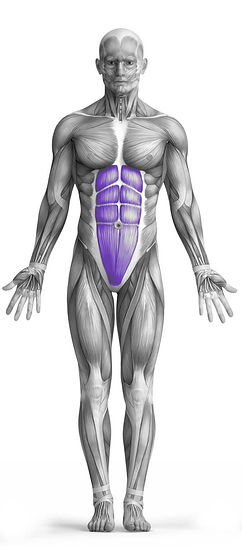Jackknife (On Bench) 101 Video Tutorial
0

Exercise Synopsis
Target Muscle Group
Abs
Secondary Targets
None
Execution
Compound
Force Type
N/A
Required Equipment
Bodyweight
Fitness Level
Beginner
Variations
None
Alternatives
None
Timer
Hour
Minute
Second
Stopwatch
00:00:00:00
Overview
The Jackknife (On Bench) is a highly effective bodyweight exercise designed to target the abdominal muscles. Performed on a bench, this movement involves simultaneously raising the legs and torso toward each other in a controlled, jackknife-like motion, engaging the rectus abdominis and obliques for maximum core activation. By stabilizing the body on the bench, it minimizes distractions from other muscle groups, allowing for a concentrated core workout without the need for additional equipment. Ideal for individuals seeking to enhance core strength and definition, this exercise emphasizes control and precision, making it suitable for all fitness levels with proper form.
How to Perform
Lie flat on a bench, ensuring your legs are extended off one side and your back is supported.
Stretch your arms overhead, keeping them straight, and align your legs fully extended to prepare for the movement.
Simultaneously lift your arms and legs in a controlled motion, bringing them toward each other as if aiming to make them meet above your torso.
Slowly lower your arms and legs back to the starting position, maintaining tension in your core throughout the movement.
Repeat the exercise for the desired number of repetitions, focusing on maintaining proper form and controlled breathing to maximize effectiveness and avoid strain.
Keep your movements deliberate, avoiding any jerking or momentum to ensure the abs remain the primary focus of the exercise.
★ Bonus: For exercises that involve external weights (such as dumbbells, barbells, or machines), the One Rep Max (1RM) calculator can help you estimate your maximum lifting capacity. Use it to track your strength progress and adjust your training for optimal results.
Tips
To increase the difficulty of the exercise, perform each movement slowly and with full control, as a slower pace significantly intensifies the challenge.
At the peak of the motion, position your legs at an angle of about 35-45 degrees relative to the bench for optimal core engagement.
Ensure your arms are fully extended and aligned parallel to your legs at the top of the movement to maximize the contraction in your abdominal muscles.
How Not to Perform
Avoid Using Momentum
Do not swing your arms or legs to complete the movement. Focus on slow, controlled motions to engage the abs fully and avoid wasting energy.
Do Not Arch Your Back
Keep your lower back pressed firmly against the bench throughout the exercise. Arching your back can strain your spine and reduce the effectiveness of the movement.
Do Not Overextend Your Arms or Legs
Avoid bringing your arms or legs too far past the starting position. Overextending can shift focus away from your core and lead to discomfort or injury.
Do Not Hold Your Breath
Breathe steadily throughout the exercise. Exhale as you lift your arms and legs and inhale as you return to the starting position. Holding your breath can cause unnecessary tension and fatigue.
Avoid Rapid Movements
Performing the exercise too quickly reduces the time under tension for your abs and makes the movement less effective. Always prioritize control over speed.
Keep Your Neck Relaxed
Do not strain your neck by excessively lifting your head off the bench. Maintain a neutral neck position to prevent unnecessary tension or discomfort.
Ensure Proper Bench Stability
Check that the bench is stable and secure before starting. A wobbly bench can compromise your form and increase the risk of injury.
Do Not Let Your Legs Drop Too Low
Lowering your legs too far below the bench level can put excessive strain on your lower back. Keep your movements within a safe and controlled range.
Focus on the Core, Not the Hips
Avoid engaging your hip flexors excessively by initiating the movement from your abs rather than your legs. This keeps the target on your abdominal muscles.
Avoid Overloading Yourself Too Early
If you are new to this exercise, avoid attempting too many repetitions or advanced variations. Build your strength gradually to prevent strain or injury.
Variations
Variations of fitness exercises refer to different ways of performing a specific exercise or movement to target various muscle groups, intensities, or goals. These variations aim to challenge the body differently, prevent plateaus, and cater to individuals with varying fitness levels.
Alternatives
Alternative exercises in fitness refer to different movements or activities that target similar muscle groups or serve the same training purpose as the primary exercise. These alternative exercises can be used as substitutes when the original exercise is unavailable or challenging to perform due to various reasons such as equipment limitations, injuries, or personal preferences.








